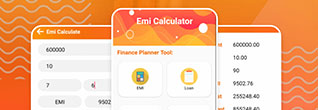

When applying for a loan, like for a home, car, or personal use, you’ll come across two key terms: sanction and disbursement. Many people think they mean the same thing, but they are different. Knowing the difference is important because it helps borrowers understand where they are in the loan process and when they will get the money.
Loan sanction is the first approval given by a bank or financial institution after looking at your details, like your documents, credit score, and income. It means the lender has agreed to give you the loan. However, this doesn’t mean you’ll get the money right away.
The lender assesses the applicant’s financial background.
The loan amount is approved, but money is not yet given.
A sanction letter is issued to the borrower, mentioning the loan amount, interest rate, tenure, and other terms.
The loan is still subject to further verification, and final approval is needed before disbursement.
Ramesh applies for a home loan of ₹40 lakh. The bank checks his salary, credit score, and other financial details. After verifying his documents, the bank issues a loan sanction letter confirming that he is eligible for ₹40 lakh at a certain interest rate. However, Ramesh will not receive the money until other formalities are completed.
Loan disbursement is when the approved loan amount is finally given to the borrower. In the case of a home loan, it may be paid directly to the seller or builder. This happens after all the required legal and financial checks are done.
The lender rechecks documents to ensure everything is in order.
The borrower signs the loan agreement before receiving the money.
In a home loan, disbursement can be done in full or in parts depending on the stage of construction.
After disbursement, EMI starts as per the agreed schedule.
Continuing with Ramesh’s case, after getting his loan sanctioned, he finalizes a property and completes all legal paperwork. The bank then transfers ₹40 lakh to the builder. Now, Ramesh starts repaying his loan in EMIs.
| Feature | Loan Sanction | Loan Disbursement |
|---|---|---|
| Meaning | Initial approval of loan by the lender | Actual release of loan amount to borrower |
| Money Received? | No | Yes |
| Documents Required? | Basic documents like salary slips, bank statements, and ID proof | Additional documents like property papers and signed loan agreement |
| Loan Agreement Signing? | Not required yet | Must be signed before disbursement |
| Credit Check | Done before sanction | Not done again |
| EMI Start Date | Not applicable yet | Starts after disbursement |
| Loan Cancellation Possible? | Yes, borrower can decide not to proceed | No, once disbursed, repayment starts |
Several factors influence whether a loan gets sanctioned or disbursed. Let’s understand these factors.
Credit Score – A high CIBIL score (above 750) increases the chances of getting a loan sanctioned.
Income Stability – A stable income ensures the lender that the borrower can repay the loan.
Existing Debts – If a borrower already has multiple loans, the sanction amount may be lower.
Employment Type – Salaried employees have higher chances of loan approval than self-employed individuals.
Factors Affecting Loan Disbursement:
Legal Verification – The bank makes sure the property is legally clear before disbursing a home loan.
Down Payment Completion – In a home loan, the borrower must pay the down payment before the bank disburses the rest.
Loan Agreement Signing – The borrower must accept all loan terms and conditions before receiving the amount.
Yes, a loan can be sanctioned but not disbursed due to various reasons, such as:
The borrower fails to submit the required documents.
The property has legal issues (in the case of home loans).
The borrower changes their mind and does not wish to proceed.
The lender changes loan conditions, making it difficult for the borrower to agree.
It's important to know the difference between loan sanction and loan disbursement when applying for a loan. A sanctioned loan means the bank has agreed to lend you money based on your financial details, but you’ll only get the money after all conditions are met. Borrowers should carefully check the sanction letter, complete all the necessary steps, and make sure they are financially ready before receiving the loan amount.
We understand that getting a loan can be very stressful with confusing documents, unclear communication, and various other challenges. That is why we take care of your loan application process, saving you time and hassle by handling the paperwork and communicating with the loan providers.
Check the details here at EazyBankLoan
Need help? Reach out at support@eazybankloan.com
No, a loan must first be sanctioned before it can be disbursed.
EMIs start only after loan disbursement, not after sanction.
Yes, you can cancel your loan after sanction, but before disbursement.
If your property has legal issues, the loan may not be disbursed, and you might have to find another property.
No, a sanction letter is just an approval. You need disbursement to get the money.
No List Founds!
Your email address will not be published. Required fields are marked *
